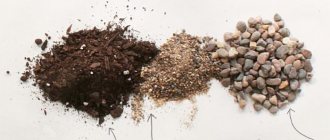Indoor violets (Saintpaulias) are, without a doubt, the most popular and favorite flowers of many gardeners and housewives. In many countries, violet blossoms mean the arrival of spring. Their inflorescences, although small, are delicate and graceful, reminiscent of our unity with nature. Indoor Saintpaulias do not take up much space on window sills, are not a source of allergies and are completely unpretentious. You just need a little love and knowledge of her preferences for these cute flowers to grow and continuously bloom in your home. We will share secrets about caring for violets at home. From this article you will learn how to properly water a flower using the wick and drip method, what soil to replant in, and even how to prepare the substrate yourself.
Growing temperature
Violet is a heat-loving flower. The optimal ambient temperature, comfortable for its cultivation, should be in the range of 20 – 25 °C. If in the summer, during flowering, the temperature tends to 30 °C, the violet will suffer from overheating. Its flowers will become smaller, the color of leaves and flowers will fade, and varietal features in the form of variegated foliage and a bright border will disappear. Use all the temperature-reducing devices you have - air conditioning, split system, fan, or ventilate the room.
But violets do not like sudden changes in temperature, cold drafts and scorching rays of the sun. They should be protected from this. In winter, the air temperature should be about 20 °C. (strictly not lower than 16 °C).
Location of the Saintpaulia pot
It is better to place the flower pot on the windowsill near the east or west window. In the summer, window sills in the northern direction are also suitable, and in winter, on the contrary, violets will be more comfortable on the windowsill of a southern window. If your windows are not of European standard, in winter it is better to remove the flower from the cold windowsill. Place the pot on a shelf or table next to the window and use additional lighting. Or you can use a foam or wooden flower stand, 3 cm thick. Then the root system on the windowsill will not be overcooled. Otherwise, at low temperatures, violet flowering will stop.
Ambient humidity
Under natural conditions, violets grow in places with high air humidity. If the air in your home is dry, it must be humidified to 50–60% or higher. It is best to place the flower in a tray with damp expanded clay or pebbles. Make sure that the bottom of the pot is not in water - the roots of Saintpaulia should not come into contact with moisture. You can install a household humidifier near the windowsill.
Regular spraying of leaves is not suitable for violets. Its pubescent leaves trap water droplets on their surface, which can result in the development of a fungal disease. It is especially dangerous to spray violets at night, when the room becomes cooler and the water does not evaporate for a long time. In autumn-winter, wet towels placed on heating radiators will help increase the humidity in the room.
How to correctly place a violet on a window: signs
There are many superstitions about growing violets in an apartment, so if you believe in omens, it is better to read the information below before buying a flower:
- There is an opinion that violets are not suitable for growing by single people, since these flowers destroy personal life (the likelihood of meeting a soul mate decreases). For married couples, on the contrary, violet brings happiness in family life, harmony and strengthens feelings.
- You can often find information that you cannot keep a violet in the bedroom. Let's look at why. The fact is that violet produces oxygen only during the daytime, and at night it consumes it and produces carbon dioxide, so often, when waking up in the morning, a person feels weak and has a headache.
- Despite some negative effects of violet, it strengthens the immune system well, so it is recommended for placement in a children's room (but at night it is taken out into a room where people do not sleep). Violet also brings prosperity and prosperity to the home. Its smell repels ants and other insects.
Did you know? In Ancient Greece, the violet was considered the flower of death and sadness, so it was used to decorate deathbeds and graves.
To get the positive effect of growing violets at home, you need to know which window is best to place the flower on. The plant is called an energy vampire, but if you place the pot on a well-lit windowsill, the plant will feed on solar energy, not human energy.
Thus, violet is an unpretentious, beautifully flowering plant and is well suited for growing on a windowsill. In order for the violet to bloom long and abundantly, it is necessary to follow the basic recommendations for caring for it and placing it in the apartment.
Solar and artificial lighting
Indoor violets love good, but diffused lighting. Direct rays of the sun are destructive for them; from them, the leaves of the plant get burned, get sick and fall off. But without enough sunlight, the violet will not bloom. For normal growth it needs good lighting for 10 - 14 hours a day. Note that Saintpaulias with dense, dark green foliage require more intense and prolonged lighting than those with light, curly leaves.
If necessary, provide artificial lighting for the flowers using a fluorescent lamp, phytolamp, or LED strips; violets grow beautifully under such light.
Lighting a plant from one side can distort the shape of the flower rosette - because the leaves are drawn to the light. Therefore, periodically rotate the flower pot around its axis. Then the bushes will be compact, symmetrical, with lush greenery and lush flowering.
Night darkness is also important for violet growth, otherwise its leaves become faded and it refuses to bloom.
Care after purchase
You purchased Saintpaulia at an exhibition or in a store and brought it home. What to do next?
- Examine the violet with a magnifying glass to see if there are any thrips or mealybugs on it. If necessary, treat the plant with an insecticide to avoid infecting the entire collection.
- Remove any dried or broken leaves and flower stalks.
- It is better not to replant a violet immediately after purchasing, but if it was grown in peat, you should not hesitate.
- Water the bush only if it is dry.
It is correct to isolate the violet for 2 months so that diseases or pests that are not detected in time do not migrate to other plants.
In practice, quarantine is rarely tolerated. Important! Place Saintpaulia separately from other flowers and observe it for at least two weeks. There were cases when they even brought home scale insects with their purchase.
Methods of watering violets
Always approach watering responsibly. Be sure to follow the golden mean, avoiding either excessive drying or waterlogging of the substrate, since deviations in one direction or the other will equally adversely affect the health of the plant. Watering violets should be done with settled tap water at room temperature. Boiled water is also suitable, since when boiled, most of the harmful salts decompose and precipitate.
Once a month, you can acidify the irrigation water with acetic acid (1 teaspoon per 1 liter of water) or citric acid (5 crystals per 1 liter of water).
We remind you that the temperature of the water used is no less important than its quality. Too cold or hot water will harm the root system of the flower.
For indoor violets, we do not recommend using the traditional method of watering - into an outlet. Water should not get on the leaves and the growing point, so as not to provoke a fungal disease of the flower. In addition, leaves through window glass can get sunburned from wet spots even in winter. It will be better if you water the violets in other ways. Here are some of the most commonly used methods of watering Saintpaulias.
Watering through a tray
Pour water at room temperature that has been standing for 24 hours into a tray or other container to a depth of a quarter of the height of the pot. Place the violet pot in water for about half an hour so that the soil is saturated with moisture. You will see that the required moisture level has been reached when the ground darkens. If you combine watering with fertilizing, the flower will receive the necessary nutrition in addition to moisture.
If you have a wide tray and you place several violets in it at the same time for watering, it is important to ensure that all the plants are healthy, otherwise the disease of one will spread to the others.
Take water quality seriously. If you water your violets with unsettled tap water, then the numerous impurities in it will each time rise to the top of the substrate during bottom watering and remain there. The soil will very soon become unusable due to salinity. The root system will stop absorbing beneficial microelements. You will see this by the white coating on the surface of the soil and the sickly appearance of the plant. Violation of the quality of the water used will result in a disadvantage of watering through the pan.
This may be interesting: Description of Streptocarpus species and varieties with photos
Drip irrigation
For drip irrigation, use a watering can with a narrow spout or a large syringe bulb so that you can easily get to the soil, bypassing the rosette of violet leaves. The growth point should also not be filled. If you don’t have a watering can or a syringe, you can take a regular plastic bottle and make a hole in its lid into which to insert a straw. Water the soil drop by drop until excess water flows into the pan from the drainage holes. Then stop watering, and after 15 minutes. drain excess water from the pan.
If you accidentally spill water on the leaves, nothing bad will happen, just blot the moisture with a dry cloth.
Immersion method
On especially hot days, during the next watering, a pot with a flower can be immersed in a basin of settled water at room temperature for about an hour. The plant will be saturated with moisture, take a break from the heat, and its root system will cool down. After this, let the excess water drain and return the plant to its original place.
Wick watering of violets
As a wick, use a string or a narrow strip of cotton fabric, which should be passed at one end into the drainage hole at the bottom of the pot. The other end of the wick is lowered into a container of water for irrigation. The flower pot is placed on this container, and moisture rises inside the wick due to the capillary effect. The essence of wick watering is that the violet will take as much water as it needs. The level of moisture in the ground remains stable and is regulated by the violet itself depending on the ambient temperature. Below is a detailed video about wick watering, we recommend that you familiarize yourself with it.
Wick watering is not suitable for all violets, because it has several disadvantages:
- This method can only water plants in the warm season, because in winter the water cools quickly, especially if the container with water and the pot are on a cold windowsill. Violets do not like their roots to be in the cold. A supercooled root system is susceptible to disease and may die.
- For uniform watering, only small pots, 7x7 in size and no larger, are suitable. Uneven soil moisture will lead to the growth of green mass to the detriment of flower blooming.
Botanical description
House violet is a low-growing evergreen perennial herbaceous plant with short stems and a basal rosette of round, leathery, fleecy leaves, green on so-called boy plants and with a light spot at the base on Saintpaulia girls. The leaves of domestic violets have an unequal heart-shaped base and a pointed or rounded apex. Saintpaulia flowers, with a diameter of 2 to 4 cm, are simple, five-petaled, or double, edged, star-shaped or corrugated, collected in racemes. The color of the flowers can be almost any - one shade or two-tone.
With proper care, violets bloom almost all year round. The fruit of Saintpaulia is a capsule with a large number of seeds.
Actually, Saintpaulia is called home violet only because its flowers are similar to the flowers of forest or garden violets; in fact, Saintpaulia belongs to a completely different family and is not related to such a well-known garden plant as tricolor violet, or pansy. The violets on the windowsills are Saintpaulias, African flowers that managed to conquer the whole world in a short period of time. We will tell you how to plant violets, how to care for homemade violets, and describe to you the most popular varieties of violets in cultivation.
- Sedum – care, photos, types
What soil is suitable for Saintpaulias?
Violets like soil that is loose, light, and breathable, so that the root system does not suffer from a lack of oxygen.
It is also important that the soil is moisture-absorbing and retains moisture well. And yet, when choosing land for violets, you should take into account the acidity level. These plants thrive in slightly acidic soils, with a pH of 6.0 to 6.5. If there is a strong deviation in acidity in one direction or another, the flower ceases to normally absorb mineral and organic substances from the soil, and nitrogen-phosphorus starvation may occur. The growth of the plant will slow down, the bud will fall off without even opening. If the substrate is too acidic, the young leaves will curl, and in an alkaline environment, they will lose their bright color, turn pale, and their tips will turn brown. Of the chemical elements in the soil for violets, nitrogen and phosphorus compounds, potassium salts and macro- and microelements should be present: iron, boron, calcium, chlorine, sulfur, zinc, molybdenum and others.
To prevent fungal diseases, we recommend treating the soil of homemade violets with a pale pink solution of potassium permanganate or a Fitosporin solution at least once a month.
In small pots, which violets love so much, the soil is quickly depleted - do not forget to fertilize it and promptly replant the plants in new pots. It is best to use ready-made soil for Saintpaulias or indoor Violets, which it is advisable to purchase in specialized stores. Unfortunately, purchased soil often suffers from poor quality. Florist specialists add perlite, vermiculite and coconut fiber to prepared soils as raising agents. But a little bit of everything, so as not to cause root rot.
How to prepare your own substrate for violets
If you are a fan of making your own soil mixtures, we will tell you the proportions suitable for violets:
- high-moor peat - 1 part;
- coniferous soil - 1 part (harvested under coniferous trees after removing the top layer of pine needles);
- leaf soil - 3 parts (harvested under deciduous trees and shrubs);
- turf soil - 2 parts (harvested in areas where perennial grasses grow);
- coarse river sand or perlite - 1 part.
For drainage, use expanded clay with pieces of charcoal of different fractions, which will regulate soil moisture and adsorb harmful impurities.
All components should be disinfected - steamed or frozen.
Vermicompost has proven itself quite well, and some gardeners use it to prepare a substrate for violets: 40% vermicompost plus 60% baking powder so that vermicompost does not petrify over time.
How to test soil for acidity
Soil acidity is not a constant value; it changes over time. Any change in the appearance of the plant, the shape and color of its leaves, slower growth and lack of flowering should alert you and prompt you to check the acidity.
The acidity of the substrate is checked using a special device. If you don’t have one, try to determine the acidity of your soil using traditional methods. We'll show you how to do this.
- Take two small containers, glass or ceramic, it doesn’t matter. Place the same small amount of soil in them, slightly damp.
- Add vinegar to the first container. If the environment is alkaline, the earth will hiss.
- In the second container, fill the soil with soda. If the environment is acidic, gas bubbles will begin to form.
- If there is no reaction, your soil is neutral.
This may be interesting: Echmea - care at home
You can reduce acidity at home using dolomite flour, and increase it with peat.
Pot size and material
It should be remembered that the flower does not like large pots. Conventionally, all violets can be divided into large, medium and miniature types. All have a superficial root system and do not require large volumes of soil. In nature, Saintpaulias grow quietly even on rocky soils. Therefore, even for a large adult plant, a pot with a diameter of no more than 12 cm is sufficient. Make your choice based on the information presented in the table.
| Pot size | Purpose |
| 5×5 | Miniature varieties of violets, young specimens, as well as rooting of children and cuttings |
| 7×7 | Violets of middle age and medium size |
| 9×9 | Mature violets |
| 12×12 | The largest specimens |
For young violets, pots with a diameter of no more than 5 cm are suitable, preferably plastic ones, as they are light, cheap and durable. One bad thing is that they do not allow air to pass through. Therefore, we advise you to add good drainage holes in the bottom of the pot to holes in the lower part of its side walls so that the root system of the plant can breathe, be ventilated freely, and the soil will not turn sour.
If you only had a large pot and you planted your small violet in it, it will not bloom. And there are several reasons for this:
- In a large pot, the flower will begin to grow primarily the green mass of leaves to the detriment of flowering.
- Until the root system of the flower entwines the entire volume of substrate offered to it, the violet will not bloom. It will take a year or two before you see the first bloom.
- Excess soil that is not entwined with roots does not dry out for a long time and can turn sour. There will be a danger of a fungal infection and the appearance of insect pests, which you may simply not detect in time in the huge mass of leaves, and you may lose the flower.
plastic pots on sale with special plastic trays, which have a ribbed surface that allows the container to be in a raised position above the tray. This also helps the root system breathe air.
Ceramic pots coated with glaze are very beautiful, but they have the same drawback as plastic ones - they do not breathe. In addition, they are expensive and heavy. If you still like ceramics, we advise you to opt for unglazed ceramic pots. They are less aesthetically pleasing, heavy and short-lived, but they allow air to pass through the walls, and violets feel great in them. And you can eliminate the aesthetic drawback if you buy a flower pot or a beautiful pot of a slightly larger size, in which you can hide the ugly clay one.
Landing
The diameter of the pot for planting ordinary varieties of violets should not exceed 9 cm. The plant should be cramped in it.
Flowering will not occur until the root system has completely developed the soil.
Only the largest specimens are planted in containers with a diameter of 10-11 cm; for trailers and miniature varieties, 3-4 cm flowerpots are used.
Reference! The diameter of the rosette should be three times the size of the pot.
Fertilizers and fertilizers for violets
Young violets need fertilizing with a predominance of nitrogen so that the green mass grows faster and the leaf rosette is well formed. Saintpaulias that are ready to bloom should be fed with fertilizer containing phosphorus and potassium. In addition, flowers also need vitamins and other microelements for healthy growth and abundant flowering. Therefore, we recommend purchasing liquid complex fertilizers with a wide range of components for decorative flowering indoor plants.
Fertilizers should be used no more than twice a month. Combine fertilizing with watering through a tray. Do not use fertilizers in larger doses than indicated in the instructions - it is better not to feed more than to overdo it and ruin the tender roots of the violet. Fertilizing should not be neglected. You will immediately notice a lack of nutrients by the appearance of the flower - its growth will slow down, the leaves and stems will lose their elasticity, there will be no flowering, or it will be weak.
After planting or transplanting, nutrients from fresh soil disappear within two months, and after this period you need to restore the nutritional value of the substrate with the help of fertilizers and fertilizing.
Violets are not particularly demanding of certain types of feeding. If there are no special fertilizers for Saintpaulias, they can be fed with complex fertilizers for vegetables, which include nitrogen, phosphorus, potassium, iron, cobalt, magnesium, copper, molybdenum and boron. Their role in the life of the plant is to ensure the synthesis of enzymes that make it possible to effectively use the energy of the sun, water and nutrients contained in the soil. Vitamins and amino acids stimulate plant roots to maximally absorb micro- and macroelements from water and soil.
Refrain from feeding violets if they are sick or weakened by attacks of sucking parasites. During a sharp increase or decrease in air temperature, you should also not feed the flower - it will not have time to eat. Well, after planting and replanting for one and a half to two months, it is worth refraining from feeding bait - let it feed on what is in the fresh soil.
To prevent fungal and bacterial diseases, root and stem rot, we recommend occasionally (once a month) watering violets with Fitosporin solution. This drug can be bought in garden or flower shops in the form of a powder or briquette in the form of plasticine. How to breed them is indicated on the packaging. The diluted drug has a long shelf life; just a few drops should be added to the water for irrigation. One package is usually enough for the whole season.
What pests is the violet afraid of?
All plants have a fairly high risk of being exposed to pests. Here is a list of traditional “sores” of indoor plants.
- mites;
- scale insect;
- thrips;
- nematodes;
- mealybug;
- aphid.
Violet affected by mites
The best treatment is prevention, this rule fully applies to flowers. It is important to inspect your plants regularly. This is done especially carefully in spring and summer, when air flow can introduce harmful spores to the plant. Pests can also enter along with a new plant purchased at the store or cut flowers brought in. At the slightest change in the appearance of the violet, you should begin to carry out prevention against the most common pests. You need to inspect the bushes with special care, noticing and analyzing every detail.
How to get rid of midges in indoor flowers using simple methods. In a special publication on our portal, we will talk in detail about how to get rid of pests in indoor plants. You will learn the reasons for their appearance, the types of midges and their signs and measures to prevent the appearance of midges.
Transplanting violets at home
Indoor Saintpaulias grow and bloom best in small pots. Experienced flower growers know that the optimal size of a container for a violet should not exceed a third of its rosette. The supply of soil in them is not large, therefore, as the rosette grows, it is advisable to first transplant the flower into a slightly larger pot. Adult specimens do not need to increase the size of the pot; the same pot is quite suitable for them if you remove a third of the soil from under the roots and replace it with a fresh nutrient substrate.
The following facts indicate the need for a transplant:
- plant growth has clearly slowed down;
- a white salt coating appeared on the surface of the substrate;
- the lower part of the violet stem is very exposed, it clearly needs to be deepened;
- the root system of the flower filled the entire space in the pot.
Blooming violets are replanted only in emergency cases, when there is no time for flowering, just to save the flower. A healthy plant should not be replanted during flowering - wait until it finishes. Also, this should not be done in winter, wait until spring. But the rest of the time, the violet can be replanted without fear of harming the plant in any way.
This may be interesting: Caring for popular varieties of Episcia
Replanting is done in different ways: by transshipment and with complete or partial replacement of the soil.
Transplantation by transshipment method
Since the root system of violets is poorly developed, sometimes the roots are not freed from the old soil so as not to damage them. Then they use the most gentle method of transplanting plants - transferring them to another pot. In this case, a new pot is selected a little larger than the previous one. A layer of drainage and a layer of new soil are placed at the bottom. Now place an earthen ball with violet roots in the center, and fill it with new substrate on the sides. Then they water the flower and put it in a permanent place.
Replanting with soil replacement, step by step
If the reason for the transplant lies in the painful condition of the flower, for example, there is a suspicion of rotting of the roots, the violet urgently needs to be transplanted into another pot by completely replacing the old soil with new one. Replanting with complete soil replacement is also used for adult plants. The advantage of this method is that by freeing the root system from the soil, you inspect its roots and remove diseased and damaged ones. You also remove the lower leaves of the rosettes and old flower stalks. We will tell you how to do this in order:
- first moisten the substrate in an old pot with violets to make it easier to remove it from there;
- Prepare a pot of suitable size. If you use an old one, clean it well from salt deposits on the walls and disinfect it;
- on the bottom place a layer of expanded clay or other drainage material, also pre-treated with manganese or boiling water;
- Place a layer of new substrate on the drainage with a slide in the center of the pot;
- free the root system from the old substrate and carefully inspect it;
- Remove rotten and damaged roots, powder the wounds with crushed activated carbon; in case of serious damage, treat healthy roots with a fungicide against root rot;
- place the violet root system in the new pot in the center and fill it with new substrate up to the lower leaves, shaking the pot slightly so that the soil fills all the voids inside;
- leave the treated and replanted plant in partial shade for a day. During this time, the violet will get used to its new place of residence a little, and its wounds will heal. Now the flower can be watered with the addition of some fungicide against root rot. If necessary, if the stem becomes bare, add a little more soil.
Replanting with partial replacement of the soil is carried out mainly for young violets. It is assumed that they need to be transplanted into a slightly larger pot. And in this case, replanting occurs using a method similar to the previous one, only the soil that crumbles off itself is shaken off. Everything that is retained is placed, along with the root system, in a new pot and covered with fresh substrate.
Pests and diseases
Species violets are rarely affected by pests or diseases, but plants that were created as a result of breeding work are not so successful in this regard.
Diseases and their treatment
Most often, Saintpaulias suffer from fusarium, powdery mildew, rust, gray rot and late blight.
Powdery mildew covers the leaves, petioles and peduncles of violets with a whitish coating. The development of the disease is provoked by poor lighting, low temperature against the background of high air humidity, dusty leaves, excess nitrogen in the soil with a lack of potassium and phosphorus. A diseased plant is treated by treating it with a solution of Fundazol or Bentlan. In case of severe damage, repeat spraying after 10 days.
- Photo of winged euonymus
Late blight occurs when a fungal infection penetrates into the root system of a violet through wounds or cracks, resulting in rotting of the plant’s root collar and brown spots appearing on the leaves. First of all, late blight destroys plants weakened by poor care. The danger of the disease is that it cannot be cured. The diseased plant is destroyed and the pot is sterilized. To avoid late blight, be sure to add superphosphate to the soil and do not allow the air humidity in the room to be too high.
Gray mold, or botrytis, can be recognized by the fluffy brownish-gray mold on the above-ground parts of the plant. The disease develops rapidly, and as a result the plant dies. Browned parts should be removed immediately and the violet should be treated with a fungicide. Throw away the rotten plant along with the soil - it will no longer be useful to you. In order not to provoke the development of the disease, protect violets from drafts, sudden temperature changes and waterlogging of the soil.
Fusarium, or rosette rotting, occurs under conditions of excessive watering, the use of cold water to moisten the soil, temperature fluctuations, growing violets in heavy soil or in a pot that is too spacious. You can find out that a plant has fusarium blight by the following symptoms: the leaf petioles become brown, the leaves fall off, and the roots darken and are easily separated from the soil. At the first signs of disease, remove the rotten parts of the plant and treat the violet with some fungicide.
Rust appears as yellow-orange tubercles on the upper side of the leaves and rusty-brown pads on the underside. As the disease progresses, violet leaves begin to fall off. The fungus is destroyed by treating the plant with one percent Bordeaux mixture or a solution of some other fungicide, as well as dusting the violet with sulfur dust.
As a preventive measure against any fungal disease, including fusarium, treat violets once every two months with a solution of Fundazol.
Pests and their control
Among the pests that pose a danger to violets are mites, scale insects and false scale insects, aphids, thrips, nematodes, scale insects, whiteflies, woodlice, flies and mosquitoes.
Ticks. When infested with mites, depressed brown spots appear on violet leaves, as if made by a blunt needle. The violet is attacked by red spider mites, cyclamen mites and flat mites that feed on the sap of the plant, causing it to weaken and wither. You can rid the violet of all types of mites by treating it with acaricides - Akarin, Actellik or Fitoverm, and the last two drugs need to be additionally spilled over the earthen lump in the pot. The procedure is carried out in the fresh air - in the yard or on the balcony, since acaricides are toxic to humans. Don't forget to wear gloves, goggles and a mask.
Scale insects and false scale insects prefer to settle in rosettes with smooth leaves. You can guess their appearance by the sticky droplets of discharge. If during inspection you find at least one adult insect, the entire plant must be treated with Agravertin.
Thrips can enter the room along with poplar fluff or flowers from the garden. These sucking insects are dangerous because they instantly multiply and are able to occupy neighboring plants. They violate the integrity of the stamens, leave silvery nibbles on the flowers, and brown or black spots on damaged leaves. In the fight against thrips, you need to remove all flower stalks on the violet and treat the plant with Fitoverm, Actellik or Aktara.
Nematodes are microscopic worms that live in the soil and infect the root system of violets, sucking juices from it and releasing toxins in return. As a result of the vital activity of nematodes, galls are formed on the roots of the plant - swellings similar to beads. There are also leaf nematodes that parasitize the leaves and buds of violets: first, light spots appear on the leaves, gradually darkening and rotting. Symptoms of the presence of leaf nematodes resemble those of gray mold disease, but without mold.
It is impossible to get rid of nematodes - you will have to destroy the diseased plant so that the pests do not spread to neighboring flowers. You can try to restore the violet by rooting a healthy leaf without any spots. You can prevent the appearance of nematodes by growing flowers in soilless peat soils, adding a Piperazine tablet to each pot.
Scale insects most often settle on young flower stalks, in the axils and folds of leaves. In places where the insect bites, the plant becomes deformed and turns reddish or brown. Soil scale insects prefer to feed on violet roots. Their presence can be detected when replanting a plant - the soil acquires a sour mushroom smell, and female mealybugs are covered with a white substance resembling a lump of fluff or cotton wool. The scale insects living on the ground parts are destroyed by two-stage treatment of the violet with Atellik or Fitoverm, and Mospilan, Reget or Dantop are used against soil parasites, spilling the solution of the drug onto the violet soil three times with an interval of 10 days.
Aphids infect peduncles, buds, and violet flowers, sucking out the sap of the plant, which causes the flower petals to become deformed and the violet flowering to look incomplete. In case of severe damage, a sticky liquid forms on the leaves and peduncles - the secretions of aphids, on which a sooty fungus settles, forming a black coating. To get rid of aphids, carry out 2-3 sessions of treating the plant with Actellik (1 ml of the drug per 1 liter of water).
Woodlice appear on violets if you keep the soil in the pot moist all the time, without allowing the earthen lump to dry out. In appearance, they resemble small turtles, not exceeding 1.5 cm in length. Woodlice damage the roots and leaves of the plant, which leads to secondary infections. The most effective way to combat woodlice is to treat violets and potted soil with acaricides. The plant is sprayed, and the substrate is spilled with Actellik or Fitoverm solution.
Flies and mosquitoes settle on violets when the soil in the pot is chronically waterlogged. They themselves do not cause much harm, but their larvae destroy the substrate, damage the roots of the plant, and contribute to compaction of the soil, which reduces the access of air to the roots. Young plants suffer the most from insects. As a result of the vital activity of these insects, rotting of the roots and stem occurs.
Having found pests, spill the soil in the pot with Karbofos solution, trace the edge of the container with a chalk pencil against cockroaches, grate the pencil and sprinkle the surface of the soil in the pot with these shavings. Adults can be destroyed with Reid or Dichlorvos aerosol. And review the violet watering schedule.
Springtails, or springtails, also grow on violets due to dampness. They are harmless to violets, but when there are too many of them, they can damage the plant's roots. Spray the earthen lump of violet with Pyrethrum and stop flooding the plant.
Whiteflies are small, bright white flies that sit on the surface of leaves and leave sticky excrement on them - a favorite environment for sooty fungi. Therefore, the surface of the leaves first turns white and then turns black. As a result, the violet stops growing shoots. An effective measure is to treat violets with a mixture of a systemic insecticide and acaricide. To get rid of whiteflies, you will need at least two sessions.
Violet doesn't bloom
Novice flower growers sometimes come to us with complaints that, despite all their efforts, they cannot wait for their violets to bloom. So why doesn't the violet bloom? Let's analyze the reasons for this phenomenon.
It is difficult to expect violets to bloom if:
- there is not enough light for her;
- she has less than 12 hours of daylight;
- the substrate is oversaturated with nitrogen fertilizers;
- the rules for watering the plant were violated;
- the air in the room is not humid enough - violets require a humidity level of 50%;
- the soil in the pot is too heavy and dense;
- the plant’s pot is too spacious;
- the violet is damaged by pests or is sick.
The violet turns yellow
Beginner violet lovers are often concerned about the fact that violets' leaves turn yellow. Why is this happening? Sometimes leaves turn yellow due to a natural reason - old age. It is better to remove such leaves along with the petioles. The second reason is the burning of leaves under the bright rays of the sun, drying out of the soil or overheating of the plant. Moisten the soil in the pot using bottom watering and organize protection of the plant from the sun at midday - you can hang curtains on the window, or you can cover the glass with sun-protective film.
If possible, place violets on a windowsill facing north, northwest or northeast. Be sure to monitor the acidity of the soil - the norm for Saintpaulia is 5.5-6.5 pH. And don’t get carried away with phosphorus fertilizers at the expense of nitrogen fertilizers - the plant needs nitrogen, including for the violet leaves to be green.
If, after the leaves have turned yellow, the base of the stem turns brown and becomes soft, the plant is suffering from excess moisture and too low a temperature.
Spots on violets
Spots on violet leaves appear for various reasons. For example, light yellow spots are the work of thrips. And if black dots are visible on the leaf under a magnifying glass, then these are spores of a parasitic fungus. Black coating on the leaves is from sooty fungus. Round light brown spots on the leaves and flowers of the plant are sunburn. Gray-beige small spots in the form of blots, stripes and curls all over the sheet are the consequences of drafts.
Dark spots along the edges of old leaves arise from a lack of potassium - this is a signal to change the substrate in the pot. White spots or plaque are signs of powdery mildew. Dark spots covered with gray mold fluff are gray rot. Dark red spots are rust.
Pruning violets
Sometimes, trimming violet leaves is not only possible, but also necessary. Let's start with the fact that the rosette of an indoor violet should look nice, proportional and consist of approximately three rows of leaves. The center of growth and development of Saintpaulia should not be overgrown with foliage.
If this happens to you, then simply remove the lower leaves, which have already begun to turn yellow and do not seem quite alive. Correctly plucking violet leaves from the stem is not difficult, just press with your fingernail at the base, and then, using twisting movements, completely remove the unnecessary leaf. If there are several such leaves, and as a result of such actions the flower’s trunk is exposed, then you can add fresh soil on top of the soil or transplant the flower deeper into new nutritious soil.
Do the same for pruning violets in the following cases:
- to remove excess leaves to stimulate lush flowering;
- to remove the top of an old violet to rejuvenate it - after a certain time, babies will appear on the remaining stump, which you use to propagate your specimen;
- to remove diseased leaves so that the disease does not spread to healthy ones.
How to water correctly?
Saintpaulias are watered only with warm, settled water.
The soil surface should be slightly damp; neither overwatering nor drying out of the earthen clod is allowed. But if you doubt whether it is worth moisturizing the violet, it is better to abstain - a short-term lack of water is less dangerous than its excess.
Experienced gardeners even wait until the top layer of the substrate dries out a little and the leaves begin to lose turgor.
Carefully! Never pour liquid into the center of the rosette - the violet will rot and die.
A large collection consisting of hundreds of specimens is difficult to care for; it is better to arrange drip irrigation.
What to do with violets after flowering
During flowering, faded peduncles should be regularly removed from the plant so that they do not interfere with the opening of new buds and do not spoil the appearance of the blooming violet. When the last flower fades, let the plant rest. Trim damaged, diseased or shriveled leaves. Take care of restoring the vitality of a well-worked violet - tear off the lower rows of leaves at the rosette, transplant it into a new pot with a nutrient mixture. If you do not have this event planned, start feeding the flower again with fertilizers with a predominance of nitrogen components so that the violet begins to grow new leaves to replace the ones you torn off.
Answers to popular questions
All flower growers face problems from time to time. We will give answers to the most frequently asked questions when growing violets.
Why is it growing poorly or slowly?
Saintpaulia may not grow well for the following reasons:
- temperature is too low or high - bring it back to normal;
- lack of nutrients - feed the plant;
- depleted soil - replant the violet;
- plant older than 3 years - root a leaf or rejuvenate a bush.
Why doesn't it bloom?
Flowering may be absent:
- if there is a lack of potassium and phosphorus or an excess of nitrogen, use only specialized fertilizers intended for Saintpaulias;
- in case of improper lighting - insufficient or without a 6-hour break;
- the flower is hot or cold, the difference between day and night temperatures;
- if the violet grows in a pot that is too loose, transplant it into a tight container until the roots have mastered the entire earthen lump and there will be no flowering;
- if the buds appear, but then fall off or dry out - perhaps low humidity;
- flower older than 3 years – root a leaf or rejuvenate a bush.
The violet will not bloom if you decide to get seeds or simply do not cut off the old flower stalks.
Why do only leaves grow?
If the leaves grow well, but flowering does not occur, then there may be several reasons:
- excess nitrogen fertilizers;
- no mandatory daily 6-hour dark period;
- lack of light.
How to care for violets in winter
In winter, the main procedures for caring for violets are:
- Good lighting of the flower using fluorescent lamps or fluorescent lamps for up to 12 - 14 hours a day, alternating with the dark for up to 8 hours.
- Maintaining the ambient air temperature in the room at least 20 °C, without sharp fluctuations in one direction or another, without drafts during ventilation.
- Regular moderate watering with warm water up to three times a week.
- Increased air humidity in the room where your Saintpaulia lives. All ways to increase humidity are welcome - household appliances, containers of water, trays with wet expanded clay, wet towels on all radiators and other tricks that you can come up with.
- On cold windowsills under pots of violets there should be thick, at least 3 cm thick, plastic or wooden stands that protect the roots of the flower from hypothermia.
- Violet leaves should not touch cold glass windows, be careful about this.
Plant propagation
Vegetative propagation is more effective, since seeds do not always manage to preserve the external characteristics of the variety. The most popular methods of reproduction are discussed below.
Leaf cuttings
Propagation using leaf cuttings with pre-sprouted roots in water
The most popular and effective way . The good thing is that you can propagate Saintpaulia with it at any time of the year. To propagate, it is enough to cut a leaf with a petiole at least 3 cm long from the rosette. It must be planted in a regular substrate and cared for as an adult plant. After about a week, roots appear, and after another 3-4 weeks, a rosette forms.
Daughter sockets
Reproduction by daughter rosettes
This method is used during plant transplantation. Young rosettes are planted in pots with a diameter of 6-8 cm. Usually, the task of choosing a pot at this stage is not worth it, since Saintpaulias are regularly replanted.
It is recommended to plant only large rosettes and remove small ones. Then they are cared for like an ordinary Saintpaulia. To grow a violet from a daughter rosette there is no need to create a greenhouse.
How to grow a violet from a leaf. Rooting and propagation of Saintpaulia.
Violet: description (80+ Photos), varieties, care and propagation at home + Reviews











